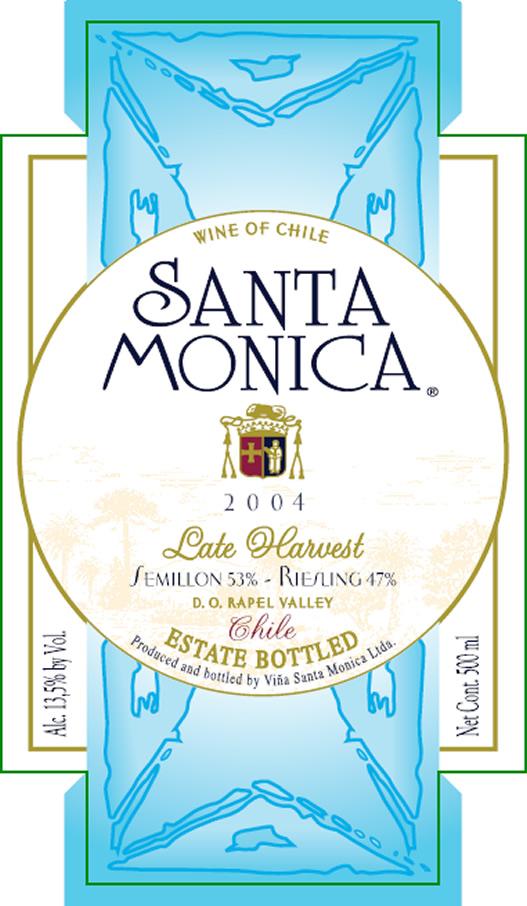2004 Rapel Valley Semillon, Riesling
The Santa Monica Late Harvest Semillon Riesling from the 2004 vintage is a delightful offering that showcases the best of Rapel Valley's winemaking prowess. This white wine presents a luscious and full-bodied profile, captivating the senses with its vibrant acidity that dances on the palate. The fruit intensity is prominent, featuring alluring notes of ripe stone fruits and honeyed undertones, which add an enchanting sweetness without becoming overwhelming. The smooth, well-integrated characteristics of this wine are complemented by its off-dry nature, making it an exceptional choice for those who appreciate a balance of richness and refreshing finish. With its rich personality and inviting flavors, this Late Harvest creation is a splendid embodiment of its varietals, perfect for sipping on a warm evening or pairing with desserts.
The Santa Monica Late Harvest Semillon Riesling from the 2004 vintage is a delightful offering that showcases the best of Rapel Valley's winemaking prowess. This white wine presents a luscious and full-bodied profile, captivating the senses with its vibrant acidity that dances on the palate. The fruit intensity is prominent, featuring alluring notes of ripe stone fruits and honeyed undertones, which add an enchanting sweetness without becoming overwhelming. The smooth, well-integrated characteristics of this wine are complemented by its off-dry nature, making it an exceptional choice for those who appreciate a balance of richness and refreshing finish. With its rich personality and inviting flavors, this Late Harvest creation is a splendid embodiment of its varietals, perfect for sipping on a warm evening or pairing with desserts.




